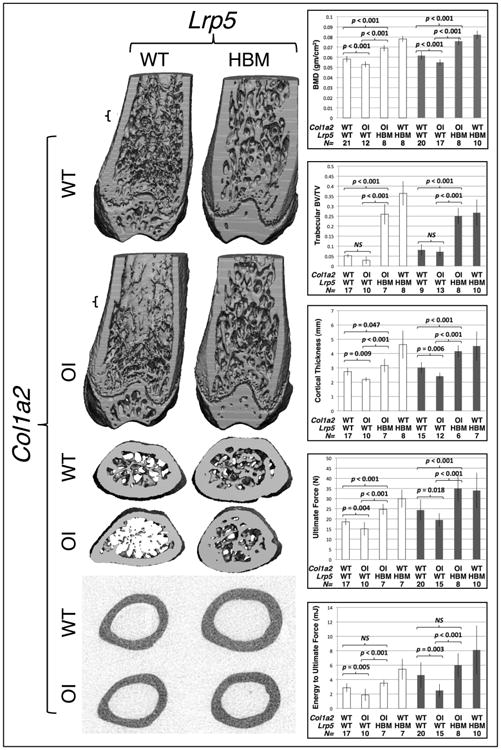Figure 1.

The Lrp5p.A214V allele improves bone properties in wild-type and in OI mice. (left panels) 3-D μCT reconstructions of the distal and midshaft femurs from male 12-week-old wild-type (Col1a2+/+;Lrp5+/+), OI (Col1a2+/p.G610C;Lrp5+/+), OI with HBM (Col1a2+/p.G610C;Lrp5+/p.A214V), and HBM (Col1a2+/+;Lrp5+/p.A214V) mice. Small brackets in the coronal section of the distal femurs indicate the location of the transverse sections depicted immediately below. (right panels) Graphs depicting mean (± SD) measures of bone mineral density (BMD), distal femur trabecular bone volume/total volume (BV/TV), midshaft femur cortical thickness, ultimate force to failure, and energy to ultimate force in female (open bars) and male (shaded bars) 12-week-old wild-type, OI, OI with HBM, and HBM mice. Genotypes, wild-type (WT) or heterozygous knockin (OI or HBM, with respect to the Lrp5 and Col1a2) are indicated, as is the number (N) of animals with each genotype that were studied. Brackets indicate comparisons and p values between OI and wild-type mice, between OI with HBM and OI mice, and between OI with HBM and wild-type mice. NS – not significant.
